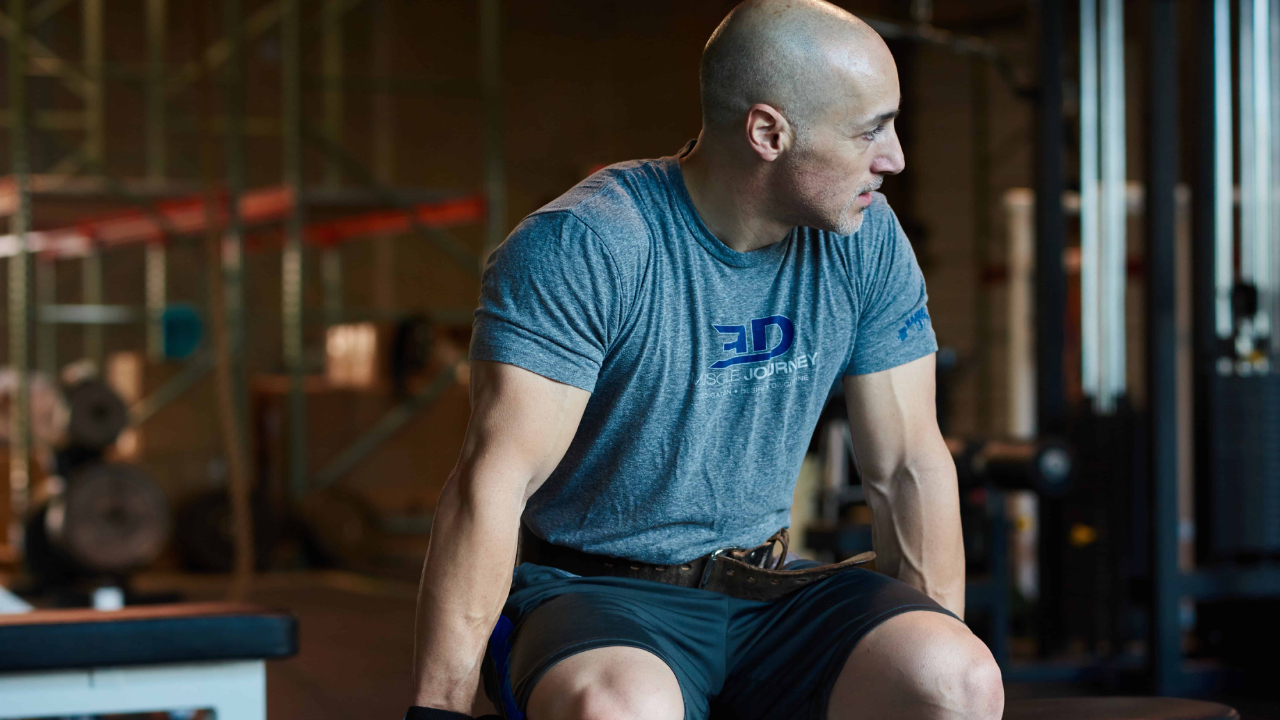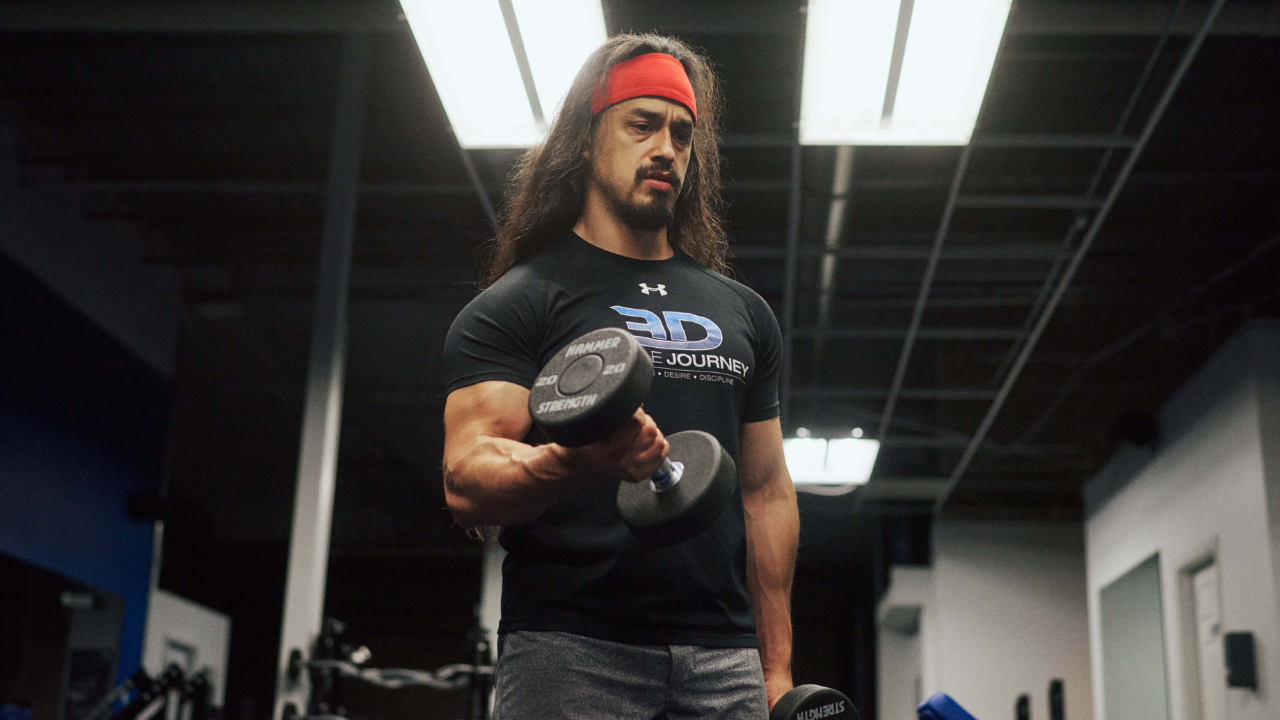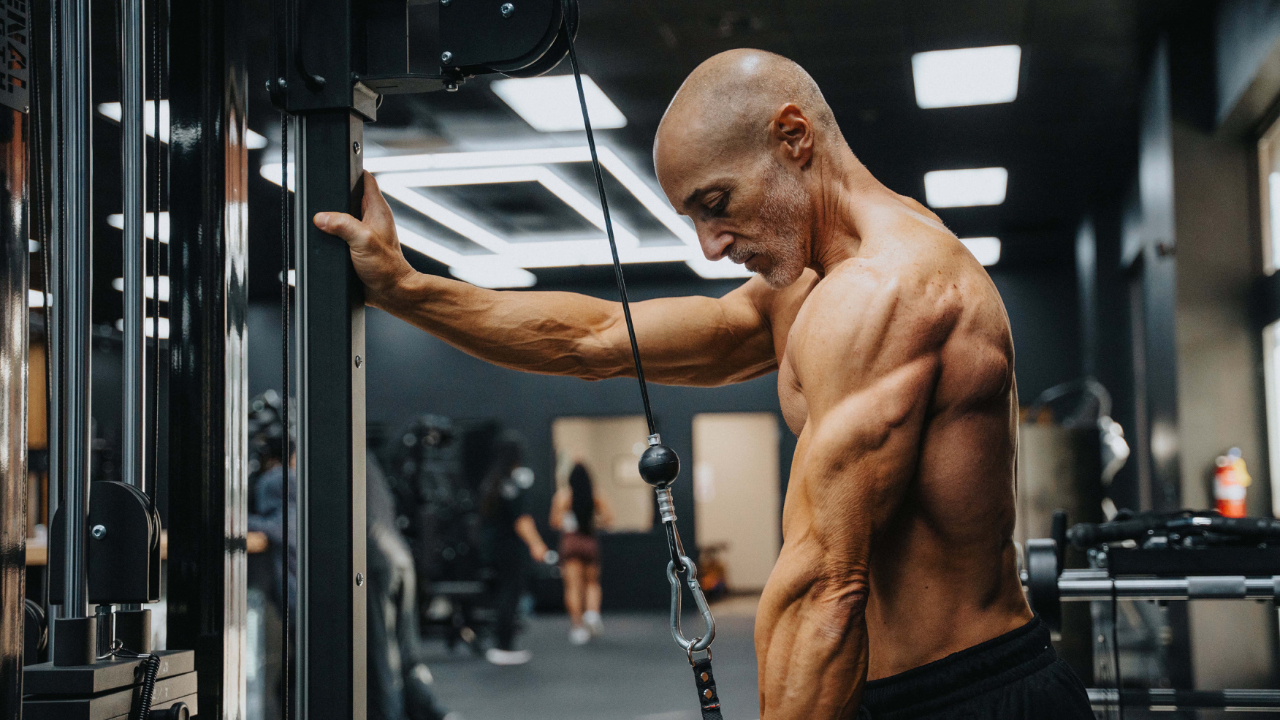BY: ERIC HELMS
We received a great question recently: “How do we reconcile studies where rest-pause and drop sets produce similar hypertrophy as straight sets, and data showing short rest periods produce less hypertrophy than longer?”
I’ve discussed this with other researchers (shout out to James Krieger; much of this is based on our discussion in Norway a few years back and his writings) without coming to a definitive answer. That’s exciting, as it means there’s more to learn about the nature of fatigue and hypertrophy. That said, just because this isn’t fully understood, doesn’t mean there isn’t a hypothesis consistent with the data. We’ll dive into this, and you’ll finish this blog with a nuanced understanding of rest periods, fatigue, their impact on hypertrophy, and ultimately, understand more than “short rest periods are bad”.
To do this, we’ll need to understand how we got to the modern concept of resting longer being superior for hypertrophy, from where exercise science used to be – believe it or not old recommendations were to rest for shorter periods for hypertrophy – and also discuss the nature of fatigue. So, strap in as we go through it all.
Originally, short rest periods were promoted as superior by the scientific community for hypertrophy based on data showing high volume training paired with restricted rest (the highest work:rest ratio) produced the largest acute growth hormone (GH) response. However, despite its name, “growth hormone” does not just impact growth. GH also regulates energy metabolism. Training with a high work:rest ratio creates a large, immediate demand for energy and increases lactate. Higher blood lactate levels create more acidic conditions. Given the metabolic role of GH, it’s unsurprising that GH release is enhanced under acidic conditions and that lactate and GH responses to exercise are significantly correlated. High work:rest ratio resistance training that increases GH (and lactate) can produce hypertrophy, but is the GH response necessarily the primary causative factor? Runners performing 30s sprints experience robust increases in GH (and lactate; which are strongly correlated); but, would you expect an entire 5x5RM full body training session with 3 minute rest intervals to produce less hypertrophy than a single 30s sprint, just because it resulted in a fraction of the GH response (1-5 vs 8-24 µg/L)? Obviously not! Indeed, a recent review examining this relationship concluded acute hormonal responses to exercise are not directly correlated with muscle growth per se.
With the background understood, let’s discuss the direct data on longer and shorter rest periods and hypertrophy. As the question indicates, most studies show that when matched for volume and effort, training protocols with longer rest periods produce similar or sometimes greater hypertrophy than those with shorter rest periods. However, “matched for volume and effort” is an important caveat. Most studies have participants train to failure. When you rest for a short period between sets, and get incomplete recovery, you’ll hit failure with fewer reps or have to reduce the load to perform the same number of reps. This is the principal hypothesis why shorter rest periods are thought to be worse for hypertrophy: less total mechanical stimulus (tension/load and volume of tension).
For example, Schoenfeld and colleagues compared two 3 day/wk full body protocols using either 1 min or 3 min rest periods with both groups doing 3 sets to failure on 7 exercises: squat, leg press, leg extension, bench, OHP, lat pulldown and cable row. In this case, load was adjusted each set to ensure failure occurred in the 8-12 rep range each set. Thus, number of sets were matched, effort per set was matched, but volume load (total tonnage lifted) was lower in the short rest group. Reason being, the short rest group had to decrease the weight more than the longer rest group to fail in the target rep range due to more cumulative fatigue set-to-set. However, if you were to rest a shorter period, but do additional sets to “make up” for lost volume due to incomplete rest, you can get on equal footing with a longer rest protocol as shown in a study by Ahtiainen and colleagues. In this way, you could argue that matching for effort and volume “biases” long rest periods to be better; because in reality, a group resting for a much shorter period between sets could accomplish more total sets in the real world, and perhaps end up doing more volume in the same time period.
But there are other ways researchers can match groups. If you match load instead of effort, you can actually bias a study the opposite way. Specifically, if you match % 1RM, you have to “hold back” the longer rest group. For example, specific to the “Good Question”, in a study on rest pause sets, the traditional group performed 3x6x80% 1RM, resting 3 minutes between sets. However, the rest-pause group performed their first set to failure at 80%, and then took a 20s mini-rest period, then did reps to failure with 80% 1RM, and repeated this rest-pause approach until they reached 18 reps. Thus, both groups performed 18 reps in total with 80% 1RM. However, in this case, the rest-pause group had a higher effort per set. Depending on the exercise, on average, you might be able to get 8-12 reps per set with 80% 1RM. Meaning, the traditional group on average was 2-6 reps short of failure for the whole study, while the rest-pause group was training to failure. Perhaps unsurprisingly, the rest-pause group outperformed the traditional training group in terms of performance and hypertrophy overall. With a study designed in this way, you could argue that matching for load and volume “biases” short rest periods to be better; because in reality a group resting for a longer period between sets could do more reps per set or lift a heavier load, and perhaps end up with a greater stimulus in the same time period.
So as you can see, depending on how you set up a study, a shorter or longer rest period could be seen to be better, as rest periods aren’t inherently bad or good; rather, we care about their impact on the stimulus you can impose when training. The logical conclusion, therefore, is whatever rest period allows for the theoretical “optimal” combination of load, volume, and proximity to failure, in an isolated training session, is ideal for hypertrophy. Rest too little, load and reps drop off too much per set, rest too much, you’ll only get a rep or two or 5kg more per set, when you would have been better off resting a minute less and doing an additional set per exercise.
But, it’s actually more complicated than that. Sets to failure with loads as low as ~30-40% 1RM are just as effective for hypertrophy as sets to failure with heavier loads so long as the set is sufficiently long, say at least ~5-6 reps. This observation has led to the hypothesis – that I agree with – that hypertrophy should be similar if effort is matched when the number of sets are also similar. You may be thinking…if that’s true, then it shouldn’t matter how long you rest! Incomplete rest makes fatigue accumulate faster, but so long as you don’t drop load below ~30-40% of 1RM or perform less than ~5-6 reps per set, it shouldn’t hinder hypertrophy. In fact, as the “Good question” hinted at, this notion is supported by the data on drop sets. In a study on drop sets, despite a reduction in load, similar hypertrophy was observed in a traditional group performing 3 sets to failure at 80% 1RM with 3 minute rest periods, compared to a group that did 80% to failure, followed immediately by dropping to 65, 50, 40, and 30% 1RM, going to failure on each drop, but ultimately performing a similar volume load to the traditional group.
With this understood, now we can revise our understanding to a new, more specific logical conclusion: whatever rest period allows for the theoretical “optimal” number of sets of at least ~5-6 reps, above ~30-40% of 1RM, at a sufficient proximity to muscle failure, should be ideal for hypertrophy. In actuality, this is only true in a vacuum, as obviously there is a limit to how much stimulus you can provide and recover from in a single session, but just for arguments sake let’s pretend that’s not the case.
So, are we there yet with this revised logical conclusion? We’re close, but unfortunately, there is still another wrinkle.
In a study where the anabolic response to training was measured, two groups performed four sets of leg press and leg extensions to failure with 75% 1RM, resting either 1 or 5 minutes between sets. Load was adjusted up or down by 5kg in cases where less than 8 or more than 14 reps were completed, which was rare. According to our revised conclusion, since load didn’t drop below 30-40%, reps didn’t drop below ~5-6, and sets and effort were equated, the anabolic responses should have been similar between groups. However, that’s not what happened; rather, the 1-minute rest period group had 50% of the initial muscle protein synthesis response that the 5-minute group had, and anabolic signalling was lower in the 1-minute rest group as well. Thus, it seems like there is something inherently inferior with short rest intervals. If we go back to the study I cited above by Schoenfeld and colleagues, this seems to be the case, as the 1 minute rest group did the same number of total sets, same reps per set (8-12), both groups trained to failure, and loads didn’t drop below ~30-40% 1RM; yet, the 1 minute rest group experienced far less hypertrophy. This also conflicts with our revised logical conclusion. Further, in the study I cited above by Ahtiainen and colleagues, if our revised conclusion was true, the short rest interval group should have grown more than the long rest interval group as they did additional sets to match volume load, instead of just getting back on equal footing with the longer rest group.
Now we’re at an impasse: both our original and revised conclusions are mutually exclusive, and the data appear in conflict. There could be an explanation though, and it may come down to the nature of fatigue.
Local muscular fatigue is helpful for the goal of hypertrophy. It’s the reason why a set of 20-35 reps can be as effective as a set of 8-12 reps for inducing muscle growth. Theoretically, a higher load set with fewer reps results in immediate recruitment of most muscle fibres, while a low-load set with many reps eventually recruits most fibres as local fatigue forces more and more fibres to “pick up the slack” as the set continues, ultimately getting you to the same stimulus. When local fatigue occurs, your nervous system is sending the signal to your muscles to contract and to keep performing reps, despite local fatigue preventing it from occurring. Locally, your muscles have given all they’ve got (Nice job muscles!).
However, not all fatigue is local. Central fatigue is characterized by a reduction in the actual neuromuscular signal to contract, which is inherently counterproductive for hypertrophy. So, what causes central fatigue? Ironically, very large amounts of local fatigue create a feedback loop that results in central fatigue. Specifically, a large, immediate cardiometabolic demand that drives up lactate can result in central fatigue. You heard that right, the exact type of training that was originally recommended to increase the GH (and lactate) response to training (high volume, short rest), can actually result in central fatigue inhibiting the signals for muscle contraction. Importantly, it’s not just your rest period that impacts cardiometabolic fatigue, another component is the amount of muscle mass that is trained. No one ever puked doing short rest periods between sets of curls, calf raises, or lateral raises to failure, but try doing that on squats and you better bring a bucket.
Specifically, in a study where single leg and bilateral leg extensions were compared, single leg extensions produced more local fatigue than extensions with both legs, presumably because when both quadriceps were trained, more cardiometabolic fatigue was generated and central fatigue kicked in, holding the participants back from generating the same amount of work, and subsequently, local fatigue. In fact, most of the training studies showing superior hypertrophy with longer rest intervals use a lot of compound movements (like the study by Schoenfeld I mentioned earlier). This also fits nicely with the drop set study I mentioned above, which was a study on dumbbell curls. Also, it explains some of the head scratching data where shorter rest periods trended towards outperforming longer rest periods. For example, in a study by Fink and colleagues, outcomes tended to favour short rest periods with 20RM sets compared to longer rest periods with 8RM sets; however, the training was only for the arms using isolation exercises.
This leads us to our final revision of our logical conclusion: whatever rest period allows for the theoretical “optimal” number of sets of at least ~5-6 reps, above ~30-40% of 1RM, at a sufficient proximity to muscle failure, so long as reductions in reps and load are primarily due to local rather than central fatigue, should be ideal for hypertrophy.
Is this the definitive answer to the question? Probably, but it’s possible something else might be going on. But as a hypothesis, it’s a pretty solid one that fits the data, is logical, and squares with anecdotal observations and experience.
The practical take homes are as follows:
- For compounds that train a lot of muscle mass, rest sufficiently so that you don’t generate a ton of cardiometabolic fatigue.
- Only use short rest, rest-pause, high-rep, drop, and failure sets on non-tiring isolation exercises.
- If you’re in great shape, you may get away with shorter rest periods but:
- To save time without hurting your gains, gradually acclimate to shorter rest periods over multiple sessions/weeks. Indeed, in two studies, a group resting 2 minutes grew similarly to a group gradually decreasing rest from 2 minutes by 15s per week, to eventually resting 30s between sets.
- You can also save time with antagonist paired sets. These are performed with short rest intervals after each exercise as one muscle group rests while you train the other (alternate an upper body push set with a pull, leg extensions followed by curls, etc.). This can be done with 30s to 1 min between sets. But, for compound push/pulls (vs bis/tris, or leg extension/curls), you need to be in good cardiovascular shape. Data shows this approach won’t compromise performance (if anything it might aid it).







